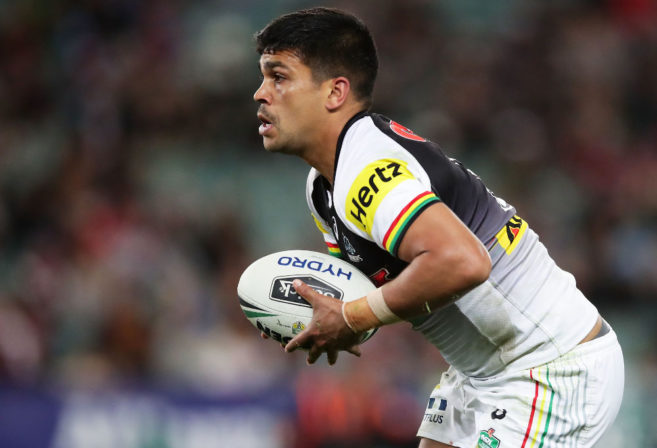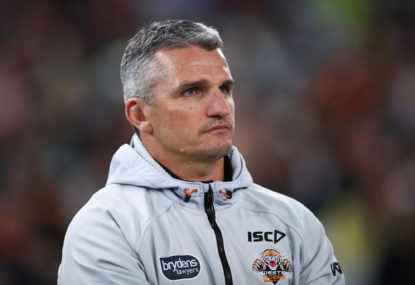A couple of weeks ago, it finally happened.
I’d both cheered and yelled at them for years, wrote about them for almost as long.
And at last, while working on a story about the opening of a local charitable organisation, I was given their phone number.
The catch – I couldn’t ask any questions related to what they did for a living. Sounds odd?
Well, the number belonged to a current footy player, so probing him with questions about an upcoming game rather than the charity he was an ambassador for would’ve probably been irrelevant.
But even if I did, I’d probably get back the same generic responses that you’d expect.
You know the ones – “credit to the boys”, “we’re taking it one game at a time” – that sorta stuff.
It’s no surprise though. Players are media trained.
These days, anything they say can and will be used against them. After all, the media is the new court of law.
Just ask Reagan Campbell-Gillard, who came under scrutiny for saying he “can’t wait to get out there and start killing some people” in the lead up to the first State of Origin game.
Or even Jack de Belin, whose copped flak this week for an almost unspeakable act – laughing in the dressing room after the Dragons’ 40-4 loss to Parramatta.
The rise of the online media means that players are more accessible than ever. And with this comes obvious risks.
But at the same time, it also comes with clear benefits. The opportunity to engage with players on a much deeper level, to learn their stories and challenges.
Trust is needed to write these stories. The player must feel comfortable to divulge their personal life.
This trust, however, is very quickly diminishing. And is now at risk of being lost.
Journalism is no longer about quality, it’s about quantity. The number of clicks that come in. The controversy that each story generates.
And players are shying away from the media because of it.
On Monday morning, Penrith fullback Tyrone Peachey reluctantly fronted the cameras for the club’s weekly media session.

(Photo by Matt King/Getty Images)
The questions, of course, were still about former coach Anthony Griffin. Peachey would’ve expected this.
What he wouldn’t have expected, however, was to have the media entourage abandon him and instead swarm on Nathan Cleary, who was innocently walking nearby.
The 20-year-old clearly hadn’t been through enough, after admitting he had to turn away from social media during the week to avoid the speculation.
And Peachey – well what he was saying obviously didn’t really matter.
Ivan Cleary experienced a similar incident in the post-match press conference after the Wests Tigers’ 22-20 win over Canberra.
Only days after fronting the media, with a quivering voice, to put an end to the misinformation, Cleary was again asked to clarify his position.
Daily Telegraph reporter Paul Crawley, who recently criticised referee apologists, was the one who posed the question.
Fortunately, Cleary quickly shut him down.
There were plenty of other talking points out of the game. Surely the Tigers keeping their finals hopes alive was enough.
But instead, Crawley wanted to hijack the discussion. His comments didn’t just damage his own reputation.
They tainted the role of journalists as a whole. And fans are losing out because of it.
There are journalists out there who use their platform for good, don’t get me wrong. NRL.com’s chief reporter Michael Chammas is a prime example.
His feature articles on both James Roberts and Josh Addo-Carr changed the way the rugby league world saw the pair.
Sacked from both the Rabbitohs and Panthers for off-field behaviour, I’ll openly admit that initially, I perceived Roberts as troubled and damaged goods.

(AAP Image/Dave Hunt)
Chammas’ story confirmed that Roberts was troubled.
But it also taught me a damn good lesson – never to judge someone without knowing what they’ve been through. And Roberts’ experience of family was far different from the one I had growing up.
He moved out of home when he was just nine years old, often on the streets. He didn’t live with his mother again until he was 20 and he rarely saw his father.
His brother Kirk, was born with muscular dystrophy. And in the background, Roberts himself battled anxiety, depression and substance abuse.
The story, on NRL.com’s Facebook page, generated over 5,200 likes and was shared 696 times.
His insight into Addo-Carr’s life was just as eye-opening.
While I don’t know Chammas personally, I’m pretty sure these stories weren’t just simply the product of him calling up Roberts’ number and organising a time to chat like I did with the player I called up.
There had to be some element of trust there. I mean, he was willing to open up and share the most confronting and vulnerable aspects of his life with the world.
There was no hidden agenda here. Just a journo wanting to give a player the chance to share his story.
It still got the clicks. It got people talking.
But for all the right reasons.
In any sport, journalism is all about the players. Without them, there’s nothing to write about.
The media will never be their best friends and that’s the way it should remain. However, as with any human relationship, respect is what’s needed.
Not all stories will be as powerful as those of Roberts and Addo-Carr.
But every player deserves the chance to tell theirs.
It all starts with journalists listening to what they have to say, rather than what they want them to say.































































































